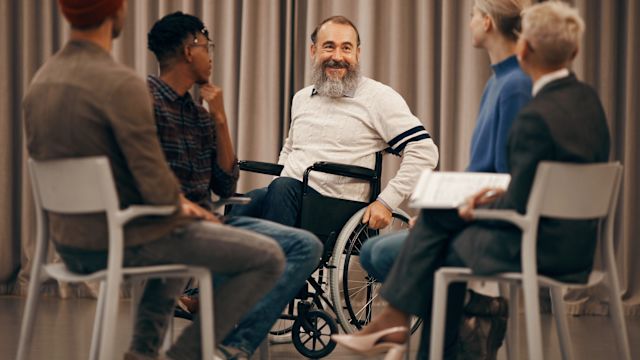Updated on September 23, 2024
Chronic inflammatory demyelinating polyneuropathy (CIDP) is a rare condition that can be thought of in a number of ways.
It is a neuromuscular disorder, which causes the gradual loss of nerve-muscle connections. A person relies on these connections for countless voluntary and involuntary functions, from opening a door, to walking up a flight of steps, to breathing and swallowing.
It is a disease with an unknown cause, though research supports the belief that CIDP is an autoimmune disease, a condition where the body’s immune system attacks and damages healthy cells and tissues.
CIDP is a rare condition, and it brings with it the challenges of living with any rare condition—finding reliable patient education information, finding healthcare providers knowledgeable about the diagnosis, the financial costs of long-term treatment. There is also the stress that often occurs when living with any chronic illness.
If you or a loved one is living with CIDP, continuing to learn about the condition and building a support system can help you meet these challenges. Below are some sites to explore to help you get started.
National Organization for Rare Disorders
When you need to learn about a health condition, it’s a good idea to start with the basics. When you want to know the basics about a rare condition, an excellent starting point is the National Organization for Rare Disorders (NORD).
The section of the website dedicated to CIDP includes information on symptoms, causes, disorders with similar symptoms, standard therapies, and clinical trials.
NORD also features the RareCare Patient Assistance Programs, which provide educational support and financial assistance for treatment. Information on eligibility and how to apply can be found on the site.
GBS/CIDP International
This is an international nonprofit organization focused on supporting individuals and families affected by CIDP, as well as related conditions like Guillain-Barre’ syndrome (GBS) and multifocal motor neuropathy (MMN).
Like NORD, it is a great starting point for learning about the basics of CIDP. Additionally, you’ll find:
- A page listing contact information for medical centers equipped to diagnose and treat CIDP.
- A page to help you prepare for an appointment with your healthcare provider, with questions related to specific aspects of diagnosis, treatment, and living with CIDP.
- A program for healthcare providers to consult and connect with the organizations advisory team.
- A list of financial assistance programs if you need help paying for treatment.
- Online forums and monthly coffee chats to connect with other people affected by CIDP and related conditions.
Autoimmune Association
As mentioned above, the causes of CIDP are not fully understood, but it is believed to be an autoimmune disease, and CIDP is one of many conditions listed on the website of the Autoimmune Association. The focus here is on information and strategies that can help people affected by many different types of autoimmune disease.
- Check Patient Resources for tips on finding a healthcare provider, getting an accurate diagnosis, and what to ask during appointments.
- Check Prescription Assistance for a step-by-step plan for finding ways to lower the cost of treatment.
- Check Support Groups for steps to connecting with other people affected by autoimmune disorders and the organization’s own online support community.
Your best source of information
Remember, your best source of information is your healthcare team. Talk to your healthcare providers about how CIDP is impacting your life. Bring up any concerns you have about your diagnosis, your treatment, your health, your unmet needs as a person being treated for CIDP. Ask for recommendations for support, resources, and steps you can take to improve your quality of life with CIDP.



